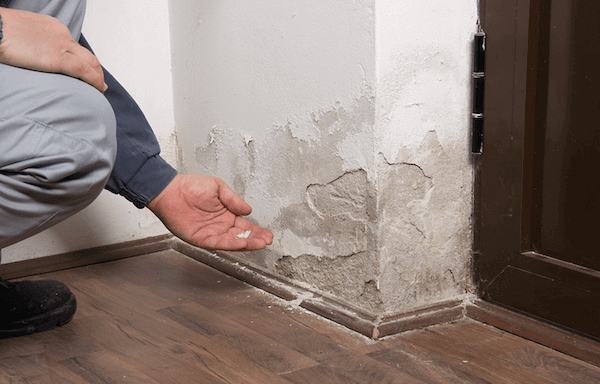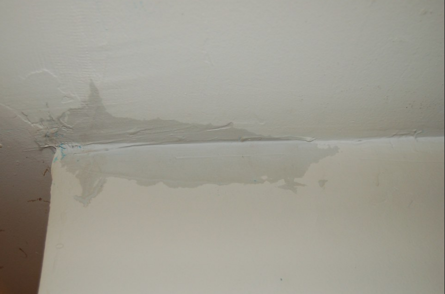Do's & Don'ts of Water Damage.
Do's & Don'ts of Water Damage.
Blog Article
Listed here in the next paragraph you will find a lot of very good insights involving Safety Tips To Prevent Fire And Water Damage.

Though water provides life, water intrusion on components where it's not supposed to be can result in damages. If the water saturates into your framework, it can peel away surface areas and also wear down the structure. Mold and mildew and also mildew likewise grow in a damp environment, which can be unsafe for your wellness. Houses with water damage smell musty and old.
Water can come from several resources such as hurricanes, floods, ruptured pipes, leakages, as well as sewage system problems. In case you experience water damages, it would certainly be good to recognize some security preventative measures. Right here are a few guidelines on how to handle water damages.
Do Prioritize Residence Insurance Coverage Protection
Water damage from flooding dues to heavy winds is seasonal. However, you can likewise experience an abrupt flooding when a faulty pipeline instantly breaks right into your house. It would be best to have residence insurance coverage that covers both acts of God such as all-natural disasters, and also emergency situations like broken plumbing.
Do Not Fail To Remember to Switch Off Utilities
In case of a catastrophe, specifically if you stay in a flood-prone area, it would certainly be advisable to shut off the major electrical circuit. This removes power to your entire house, stopping electric shocks when water comes in as it is a conductor. Additionally, do not neglect to turn off the major water line shutoff. When floodwaters are high, furnishings will certainly walk around and also create damages. Having the primary valve turned off avoids further damage.
Do Stay Proactive and Heed Weather Condition Signals
Listen to discharge cautions if you live near a creek, river, or lake. Doing so lowers possible home damages.
Do Not Neglect the Roof
You can avoid rain damage if there are no holes as well as leaks in your roofing system. This will prevent water from moving down your wall surfaces and also saturating your ceiling.
Do Focus On Little Leaks
A burst pipe doesn't take place overnight. You might see bubbling paint, peeling off wallpaper, water touches, water spots, or leaking audios behind the wall surfaces. Have your plumbing fixed prior to it results in enormous damages.
Don't Panic in Case of a Ruptured Pipeline
When it comes to water damages, timing is vital. Therefore, if a pipe bursts in your house, promptly shut off your main water valve to reduce off the resource. Call a credible water damage restoration professional for help.
Water provides life, water intrusion on components where it's not expected to be can result in damage. Residences with water damage scent old as well as musty.
Water damage from flooding dues to hefty winds is seasonal. You might notice bubbling paint, peeling wallpaper, water touches, water spots, or leaking sounds behind the walls. When it comes to water damage, timing is vital.
Some Do's & Don't When Dealing with a Water Damage
DO:
Make sure the water source has been eliminated. Contact a plumber if needed. Turn off circuit breakers supplying electricity to wet areas and unplug any electronics that are on wet carpet or surfaces Remove small furniture items Remove as much excess water as possible by mopping or blotting; Use WHITE towels to blot wet carpeting Wipe water from wooden furniture after removing anything on it Remove and prop up wet upholstery cushions for even drying (check for any bleeding) Pin up curtains or furniture skirts if needed Place aluminum foil, saucers or wood blocks between furniture legs and wet carpet Turn on air conditioning for maximum drying in winter and open windows in the summer Open any drawers and cabinets affected for complete drying but do not force them open Remove any valuable art objects or paintings to a safe, dry place Open any suitcases or luggage that may have been affected to dry, preferably in sunlight Hang any fur or leather goods to dry at room temperature Punch small holes in sagging ceilings to relieve trapped water (don't forget to place pans beneath!); however, if the ceiling is sagging extremely low, stay out of the room and we'll take care of it DO NOT:
Leave wet fabrics in place; dry them as soon as possible Leave books, magazines or any other colored items on wet carpets or floor Use your household vacuum to remove water Use TV's or other electronics/appliances while standing on wet carpets or floors; especially not on wet concrete floors Turn on ceiling fixtures if the ceiling is wet Turn your heat up, unless instructed otherwise

I was made aware of that article about What You Can Do At Home To Prevent Fire And Water Damage from an acquaintance on another site. Are you aware of another individual who is interested by the subject? Please feel free to promote it. Thank you so much for taking the time to read it.
Report this page